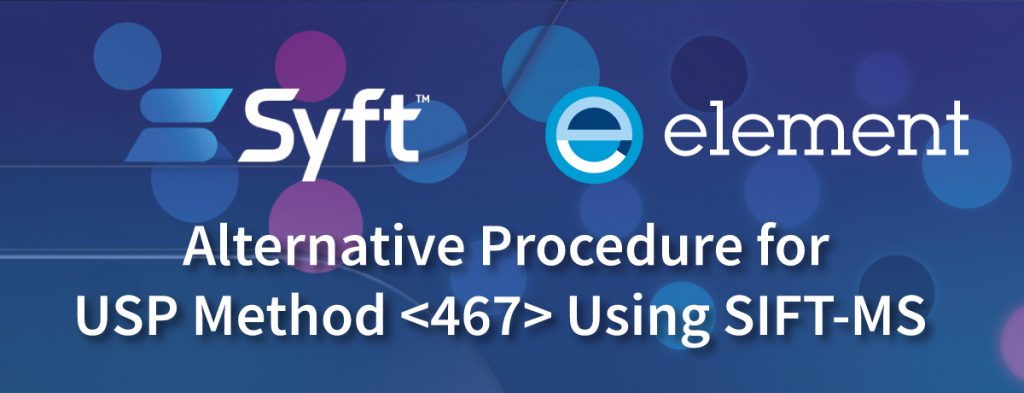Rapid Residual Solvent Analysis: Validation of an Alternative Procedure for USP Method <467> Using SIFT-MS

Residual solvents are defined as “organic volatile chemicals that are used or produced in the manufacture of drug substances or excipients, or in the preparation of drug products. The solvents are not completely removed by practical manufacturing techniques” (page 1, International Committee on Harmonization (ICH) (2021)). Clearly, there is a need to measure these, and the US Pharmacopeial method USP <467> describes a method for this, based on headspace GC-FID analysis. However, the method is long; sample to sample takes approximately 1 hour, for what should be a relatively straightforward method.
The rate-limiting steps are the incubation time and the overall time for the chromatographic method. A solution to long incubation times are to use multi-position agitators, such as those used with the GERSTEL MultiPurpose Sampler (MPSr), where “PrepAhead” functions allow for efficient sample handling. However, if the GC method is at least as long as the incubation time, there isn’t space for any efficiency savings. Basically, the method needs to be quicker. And this is where SIFT-MS comes in…
Selected Ion Flow Tube Mass Spectrometry (SIFT-MS) is a real-time, volatiles analyser, that uses soft chemical ionisation to separate complex mixtures, without the need for chromatography. No chromatography equals fast measurement – several seconds is all that is required to quantify relatively complex mixtures. Now it is possible to utilise the efficiencies of the MPSr autosampler, when coupled to the SIFT-MS to analyse samples every couple of minutes. Therefore, automated SIFT-MS offers an alternative approach to GC-FID, by providing sample throughputs 10 – 15 times faster.
To demonstrate this, we have used our automated SIFT-MS to validate an alternative procedure for USP method <467> and shown that it is possible to achieve the required performance characteristics as the GC-FID method. Indeed, automated headspace SIFT-MS is not limited to method <467>, any complex, volatile mixture can be analysed, in the same timeframe.
If you would like to know more please see the associated Application Note or the video presentation below, which cover this in more detail.
Alternatively, contact us or come and have a look at the method in action in our Cambridge Lab.

